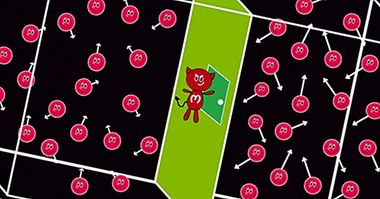The differences between the assonant rhyme and the consonant
Poetry is one of the most prolific arts Throughout history and in which greater transmission of emotions and feelings are reflected through the word. In fact, it means putting into words what a person is feeling or feeling about a particular topic. Lorca, Unamuno, Rubén Darío, Machado, Neruda, Rosalía de Castro or Bécquer are just some of the relatively modern Spanish exponents of this art. Within the poetry a great multitude of literary resources can be used. One of which is the rhyme, which although it is not essential is often used in poetry and music.
But not all rhymes are the same, being able to be cataloged according to different classifications. Between the two most popular categories we find the assonating rhyme and the consonant rhyme, whose differences we will talk about throughout this article.
- Maybe you're interested: "23 poems by Pablo Neruda that will fascinate you"
The concept of rhyme
Before distinguishing between assonant rhyme and consonant, it is advisable to make a brief revision to the concept of rhyme. Rhyming is understood as the use of a series of sounds or words with repeated or similar elements in two separate sentences, in such a way that a certain resonance is generated between them. This resonance is purely aesthetic , not having to have any relationship at the grammar or lexical level.
As we have mentioned, it is a technique widely used at the level of poetry and the use of language in verse, as well as in music. It is part of all elaboration created in verse, configuring the lyrical genre . Even the absence of rhyme is considered a type of rhyme, the white or free rhyme. Its main purpose is to produce a cadence or rhythm that contributes to making the message sent something more beautiful and melodic.
As we have said, there are many types of rhymes according to characteristics such as rhymed or repeating elements, their presence or absence or the way in which the different verses are linked. But of all of them, there are two main ones: the rhyme assonance and consonant.
- Related article: "Art therapy: psychological therapy through art"
Assaulting rhyme
Assonating rhyme is understood as that which occurs between words of different verses in which they are repeated, from the tonic syllable (concretely of its last vowel), the vowels of the last word of both verses. The consonants present in them can vary enormously , not requiring any relationship between those present in both words and assuming the use of different phonemes and sounds. In this way the words of both verses do not have to end exactly the same, but their similarity and resonance is due to the repetition of the vowels.
This kind of rhythm allows greater flexibility when building a poem or poetry . They are considered imperfect rhymes, being mainly the sonority of the words that generate it.
An example of a rhyming assonance can be seen in the following fragment of a poem by Bécquer, in which even rhymes are assonant (sea and crystal, death and eternally, crepe and love):
The sun will be able to cloud forever. The sea will dry in an instant. The axis of the earth will break. Like a weak crystal, everything will happen! Death can cover me with its funeral crepe But never in me can the flame of your love be extinguished.
Rhyme
Formerly considered perfect rhymes , consonant rhymes with those that occur when the last word of two (or more) verses contain the same phonemes from the tonic syllable. The sounds are identical, both at the level of vowels and at the level of consonants. Thus, the last word of the rhyming verses has an identical ending.
It is important to bear in mind, however, that a rhyme can be consonant without the need for consonants in the word in question: it is only that the sound is identical in its entirety. It should also be noted that we have said that we are talking about sounds and not letters , may not exist the same letter exactly in both verses while it sounds the same way.
An example of consonant rhyme can be seen in the following fragment of a poem, in this case by Federico García Lorca (in which we can see how the -igo and -ores terminations are repeated):
* I want to mourn my grief and I tell you so that you love me and you cry me in a nightfall of nightingales with a dagger, with kisses and with you
I want to kill the only witness for the murder of my flowers and turn my crying and my sweats into eternal pile of hard wheat. *
Similarities and differences
The similarities and differences between the rhyme assonance and the consonant rhyme They are quite obvious. In both cases we are faced with a literary device used with great frequency in the lyrical genre and even in other genres and arts.In both cases the vowels are also used as an element to generate rhythmicity and melody within the work.
On the other hand, the main difference is that in the case of the assonating rhyme there is not a complete overlap of the sounds emitted between the verses that rhyme, while it does happen with the consonant rhyme. It may also be more difficult to generate a consonant-type rhyme due to the need for the same sounds to be adapted, although on the other hand the assonating rhyme implies having a clear idea of which concrete sounds have to be repeated.



















